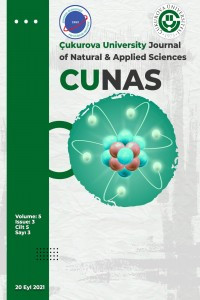Optimization of post curing in mask stereolithography
Optimization of post curing in mask stereolithography
analysis of variance, mask stereolithography, optimization post curing, tensile properties,
___
- [1] Bagheri, A. and Jin, J. (2019) "Photopolymerization in 3D Printing", ACS Applied Polymer Materials, 1 (4), pp.593-611. DOI: 10.1021/acsapm.8b00165
- [2] Pagac, M., Hajnys, J., Ma, Q.-P., Jancar, L., Jansa, J., Stefek, P. and Mesicek, J. (2021) "A Review of Vat Photopolymerization Technology: Materials, Applications, Challenges, and Future Trends of 3D Printing", Polymers, 13, 598. DOI: 10.3390/polym13040598
- [3] Slade, D. Effects of print and post-cure parameters on mechanical properties of 3D printed parts, NewPro3D, https://wiki.ubc.ca/images/f/ff/EFFECTS_OF_PRINT_AND_POST-CURE_PARAMETERS_ON_MECHANICAL_PROPERTIES_OF_3D_PRINTED_PARTS.pdf, consulted 12 August 2021.
- [4] Salmoria, G.V., Ahrens, C.H., Beal, V.E., Pires, A.T.N. and Soldi V. Evaluation of post-curing and laser manufacturing parameters on the properties of SOMOS 7110 photosensitive resin used in stereolithography, Materials and Design 30 (2009) 758–763, doi:10.1016/j.matdes.2008.05.016
- [5] Quan, H., Zhang, T., Xu, H., Luo, S., Nie, J. and Zhu, X. (2020) "Photo-curing 3D printing techniques and its challenges", Bioactive Materials, 5(1): 110-5. DOI: 10.1016/j.bioactmat.2019.12.003
- [6] https://electronics.howstuffworks.com/lcd.htm#pt4, consulted 25 May 2021.
- [7] https://www.structo3d.com/pages/mask-stereolithography-msla-technology, consulted 25 May 2021.
- [8] Mao, Y., Miyazaki, T., Sakai, K., Gong, J., Zhu, M. and Ito, H. (2018) "A 3D printable Thermal Energy Storage Crystalline Gel Using Mask-Projection Stereolitography", Polymers, 1-14, 10, 1117. DOI: 10.3390/polym10101117
- [9] https://diyodemag.com/education/exploring_3d_masked_stereolithography_3d_printing 25.05.2021, consulted 25 May 2021
- [10] Vukonić, L. Influence of post curing in masked stereolithography, diploma thesis, University of Zagreb, FSB, Zagreb, 2021.
- [11] Rujnić-Sokele, M (2007) "Influence of the stretch blow moulding processing parameters on PET bottles properties", Polimeri, 284, pp.213–292.
- [12] Zguris, Z. How Mechanical Properties of Stereolithography 3D Prints are Affected by UV Curing, Formlabs, https://archive-media.formlabs.com/upload/How-Mechanical-Properties-of-SLA-3D-Prints-Are-Affected-by-UV-Curing.pdf, consulted 12 August 2021.
- Yayın Aralığı: Yılda 4 Sayı
- Başlangıç: 2022
- Yayıncı: Çukurova Üniversitesi
Hüsniye ARDİC ALİDAGİ, Seda ÇETİNDERE
Mahmut DAĞDEVİREN, Yılmaz ERBİL
Developing an Automation System for Conflictual Returns Using Machine Learning
Elif Melis KILIÇ, Mehmet Nezir ALP, Akasya AKYUZ, Fatih ABUT, Fatih AKAY
